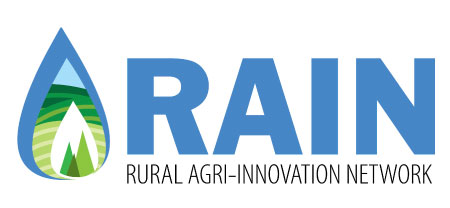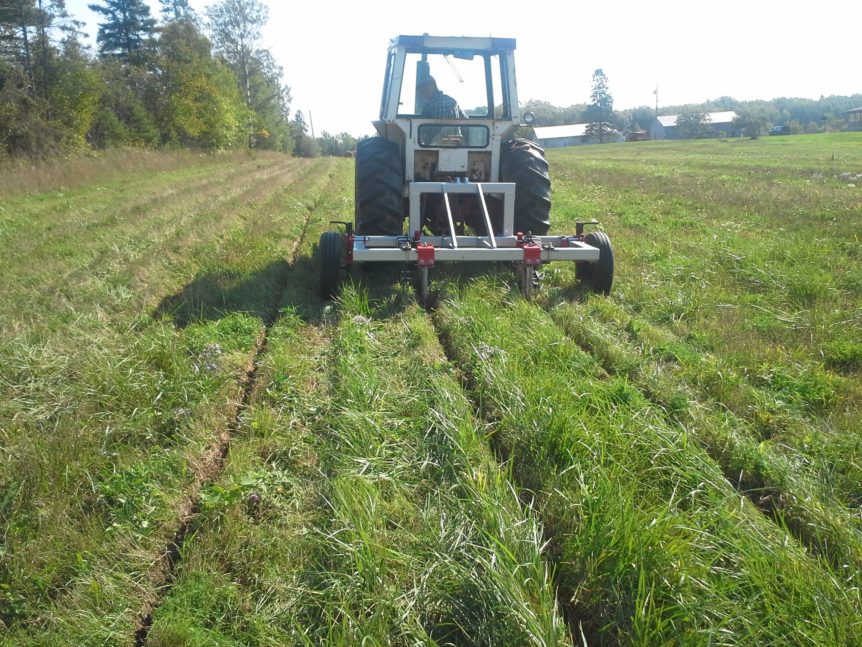by Mikala Parr, RAIN Research Assistant
In 2015 a trial involving a keyline subsoiler plow was put in place. Subsoiling can sometimes increase a soil’s water holding capacity by fracturing compacted layers (plow pans) and creating channels for water to infiltrate the soil. The keyline pattern runs across a slope – like contour cropping – and attempts to distribute water more evenly across the landscape using the plow channels.
Over summer 2016, data was taken to see the residual effects of the plow on soil water content. There was a weather station on the property that measured the water content of high and low spots in the field. Both the keyline plowed field and the control field were monitored for water content. When the data was received, it was graphed and analyzed.
There were three hypotheses (predictions) going in to this study:
- Keyline plowed at the top of a slope should hold more water than the control due to subsoiling;
- Keyline plowed at the bottom of a slope should hold less water than control due to the keyline pattern upslope; OR
- Keyline plowed at the bottom of the slope should hold more water than control due to subsoiling.
When the soil moisture data after each rainfall was graphed, we observed three trends:
- Keyline plowed at the top of a slope had a lower moisture content than the control, but retains water better – it took longer for water to drain away after a rainfall.
- At moisture contents less than 0.26m3 water per m3 soil, keyline plowing at the bottom of a slope held less water than the control.
- At moisture contents greater than 0.26m3 water per m3 soil, keyline plowing at the bottom of the slope held more water than the control.
Our observations do not support our hypotheses, so what is going on? There was not a compaction problem where the trial was located. The use of a subsoiler was unnecessary. This may explain why we saw no clear trends in the data.
Thanks goes to our farmer cooperator Peter Lambert.
This project was funded in part through Growing Forward 2 (GF2), a federal-provincial-territorial initiative.
The Agricultural Adaptation Council assists in the delivery of GF2 in Ontario.

